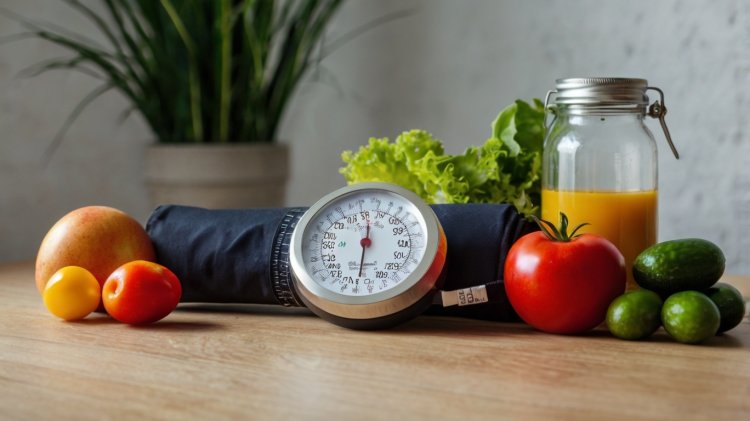How to Raise Low Blood Pressure Naturally Through Diet
Learn how to manage low blood pressure through dietary changes. Discover foods rich in vitamin B12, folate, and electrolytes, along with lifestyle tips for improving hypotension naturally

How to Raise Low Blood Pressure Naturally Through Diet
Introduction
Low blood pressure, or hypotension, occurs when blood pressure readings consistently fall below 90/60 mm Hg. While for some, this condition may not cause significant symptoms, others may experience dizziness, fatigue, or fainting. Diet plays a vital role in managing hypotension naturally. By incorporating certain foods and making lifestyle adjustments, you can effectively raise low blood pressure and improve your overall health.
What Is Low Blood Pressure?
Low blood pressure is defined as a blood pressure reading lower than 90/60 mm Hg, coupled with symptoms like dizziness, blurred vision, or fatigue. A healthy blood pressure varies based on factors such as age, medical history, and overall health. Hypotension can stem from various causes, including dehydration, anemia, and certain medications.
Symptoms of Hypotension
-
Dizziness or light-headedness
-
Blurred vision
-
Fatigue
-
Weakness
-
Fainting spells
Seek immediate medical attention if symptoms include rapid pulse, shallow breathing, or clammy skin, as these may indicate shock.
Foods to Help Raise Blood Pressure
Adjusting your diet can significantly impact blood pressure levels. Here are some nutrient-rich foods and beverages to include:
1. Increase Fluid Intake
Dehydration reduces blood volume, causing a drop in blood pressure. Staying hydrated is crucial, especially during exercise or in hot weather.
Suggested Options:
-
Water
-
Electrolyte-rich beverages
-
Herbal teas
2. Foods Rich in Vitamin B12
Vitamin B12 deficiency can lead to anemia, contributing to hypotension.
Sources:
-
Eggs
-
Fortified cereals
-
Lean meats (chicken, beef)
-
Nutritional yeast
3. Folate-Rich Foods
Folate supports the production of healthy red blood cells, preventing anemia-related low blood pressure.
Sources:
-
Asparagus
-
Lentils
-
Citrus fruits
-
Spinach
4. Salty Foods
Sodium increases blood pressure by retaining water in the body.
Suggested Options:
-
Pickled vegetables
-
Cottage cheese
-
Olives
-
Smoked fish
5. Caffeine
Caffeinated beverages temporarily stimulate the cardiovascular system, raising heart rate and blood pressure.
Options:
-
Coffee
-
Green tea
-
Black tea
Dietary Tips for Managing Low Blood Pressure
Eat Smaller, Frequent Meals
Large meals can cause a sudden drop in blood pressure due to increased blood flow to the digestive system. Opt for smaller, frequent meals throughout the day.
Stay Hydrated
Dehydration can exacerbate hypotension. Drink at least 8-10 glasses of water daily and limit alcohol consumption, which can cause dehydration.
Increase Electrolyte Intake
Electrolytes like sodium, potassium, and magnesium regulate blood pressure. Include electrolyte-rich foods in your diet.
Avoid Rapid Position Changes
When standing up, do so gradually to prevent dizziness or fainting caused by sudden blood pressure drops.
Pregnancy and Low Blood Pressure
Low blood pressure is common during the first 24 weeks of pregnancy due to hormonal changes and an expanding circulatory system. Symptoms typically resolve as pregnancy progresses.
Managing Hypotension During Pregnancy:
-
Stay hydrated by drinking water and electrolyte-rich fluids.
-
Eat a balanced diet with adequate vitamins and minerals.
-
Monitor blood pressure regularly.
If symptoms persist, consult your healthcare provider to rule out complications like anemia or ectopic pregnancy.
Lifestyle Adjustments for Hypotension
In addition to dietary changes, certain lifestyle habits can help manage low blood pressure effectively:
1. Wear Compression Stockings
Compression stockings improve circulation by preventing blood from pooling in the legs, which helps maintain blood pressure levels.
2. Avoid Long Periods of Standing
Standing for extended periods can lead to blood pressure drops. Take breaks to sit or move around.
3. Limit Time in Saunas and Hot Tubs
Prolonged exposure to heat can cause dehydration and lower blood pressure.
4. Exercise Regularly
Moderate exercise promotes better circulation, which helps stabilize blood pressure.
When to Seek Medical Advice
While dietary and lifestyle changes can help manage hypotension, persistent symptoms may require medical intervention. Consult your doctor if:
-
You frequently experience dizziness or fainting.
-
Symptoms worsen despite changes in diet and hydration.
-
You suspect an underlying condition like anemia or a thyroid disorder.
Conclusion
Raising low blood pressure naturally is achievable through proper diet and lifestyle modifications. Incorporating fluids, vitamin-rich foods, and moderate amounts of salt into your meals can make a significant difference. Always consult with a healthcare provider to ensure your nutritional needs are met and to address any underlying conditions.
FAQs
Q1. What foods help raise low blood pressure? Foods rich in vitamin B12, folate, and sodium, such as eggs, spinach, and pickled vegetables, can help raise low blood pressure.
Q2. Can dehydration cause low blood pressure? Yes, dehydration reduces blood volume, leading to a drop in blood pressure. Staying hydrated is crucial.
Q3. Is caffeine effective for hypotension? Caffeine can temporarily raise blood pressure by stimulating the cardiovascular system.
Q4. How can I manage low blood pressure during pregnancy? Stay hydrated, eat a balanced diet, and consult your healthcare provider for regular monitoring.
Q5. Are there any quick remedies for sudden low blood pressure? Drinking water, consuming salty snacks, or lying down with your legs elevated can help stabilize blood pressure quickly.










